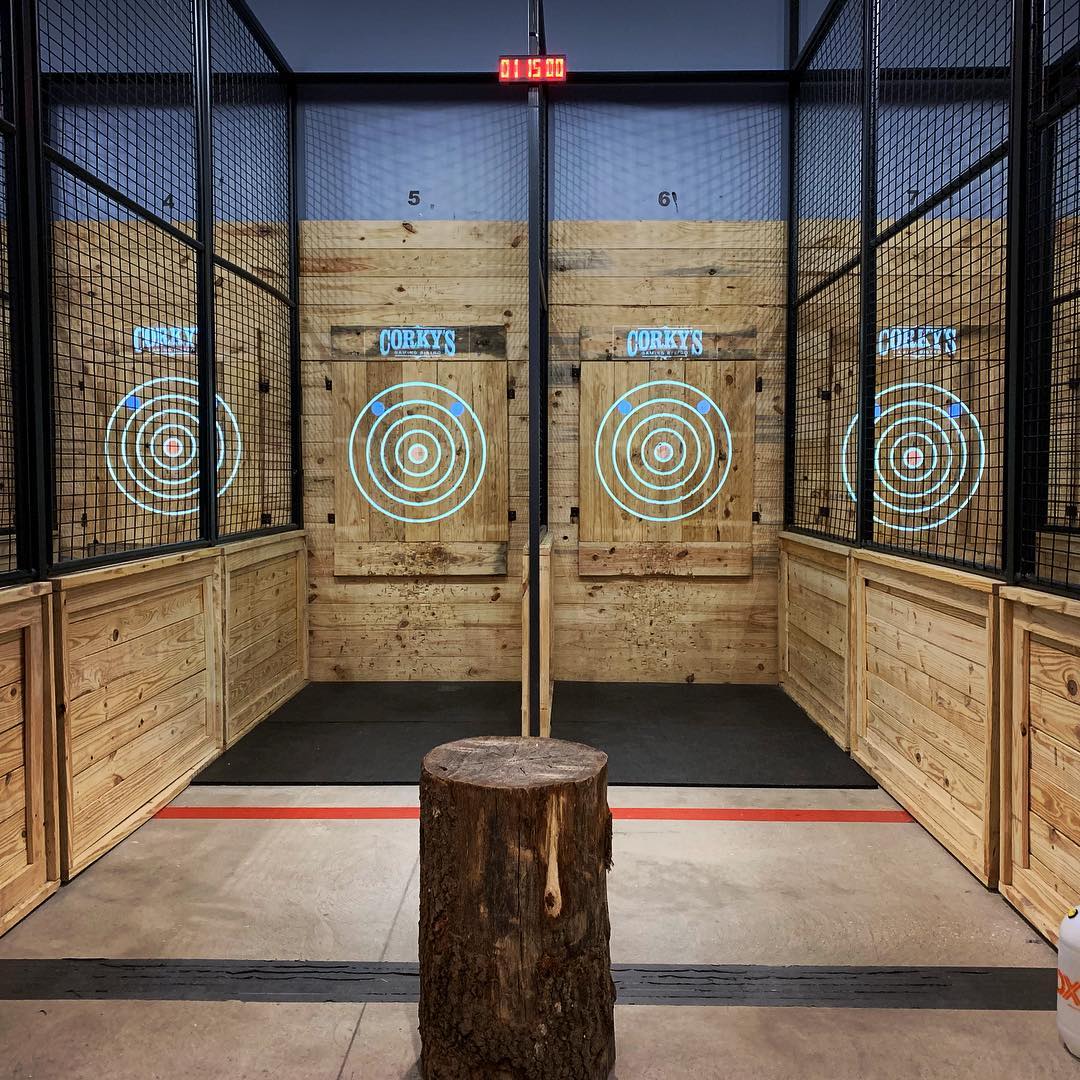Study the Axe Throwing Denver Scene: What You Need to Know
Study the Axe Throwing Denver Scene: What You Need to Know
Blog Article
The Enjoyable of Axe Throwing: Exactly How This Sport Integrates Skill and Adrenaline for a Fun Time
Axe throwing has emerged as a mesmerizing sport that masterfully intertwines the requirement for exact skill with the thrill of adrenaline, offering individuals a interesting and one-of-a-kind experience. The act of hurling an axe in the direction of a target demands focus and strategy, at the same time promoting an environment of camaraderie and pleasant rivalry.
The Origins of Axe Throwing
Axe throwing, a leisure activity that has gained considerable popularity recently, traces its roots back to old times. This primal sport go back to early human background, when axes were mainly utilized as tools and weapons. The earliest records of axe usage in affordable contexts are discovered amongst the Celts and Vikings, that tossed axes for sport in addition to in combat training. The practice was not simply an activity yet a vital ability for survival and war.
Middle ages European warriors, particularly during the Middle Ages, exercised axe throwing as component of their martial training. The Francisca, a kind of tossing axe utilized by the Franks, came to be famous for its dangerous accuracy. This traditional weapon was developed to be thrown at adversary shields and shield, showcasing its double utility in both sporting activity and fight.
In more current history, axe throwing saw a resurgence in the logging camps of North America in the 20th and 19th centuries. Lumberjacks would take part in friendly competitors, examining their accuracy and stamina by focusing on wood targets. This evolution from a survival ability to an entertainment activity has actually led the method for its contemporary revival, with devoted places and organizations currently celebrating the sporting activity around the world.
Tools You Need
Recognizing the abundant history of axe tossing improves the admiration of the sporting activity's modern version. For competitive and leisure axe throwing, the most typically used kind is the hatchet, normally considering between 1.25 to 2 pounds with a handle size of about 16 inches.
Just as essential is the target. Guideline targets are built from timber, with softwood ranges like want or cottonwood being preferred for their capability to hold the axe and take in. The target is typically separated into 5 concentric circles, each with a certain point value, to assist in scoring.
Safety equipment, though frequently forgotten, is crucial. Safety handwear covers can enhance hold and prevent blisters, while closed-toed footwear are a must to shield feet from gone down axes (denver axe throwing). Ultimately, a well-lit, roomy throwing location, complete with security obstacles, ensures a controlled atmosphere where participants can concentrate on honing their abilities.
Fundamental Techniques Described
Mastering the fundamental techniques of axe throwing is necessary for both safety and proficiency. The dominant hand ought to be positioned straight below the axe head, while the non-dominant hand supports the end of the take care of.
Next, concentrate on the position. Stand with your feet shoulder-width apart, guaranteeing your body is stabilized. Your dominant foot needs to be slightly forward, aligning with your target. This positioning aids in maintaining security and routing power properly in the direction of the target.

Safety And Security First
Making certain safety in axe throwing is extremely important to producing a delightful and injury-free experience. A properly designed axe tossing center features clear separations between tossing lanes, tough backgrounds to catch stray axes, and non-slip flooring to protect against accidents.
Advantages of Axe Throwing
Axe throwing deals a myriad of advantages that expand beyond easy entertainment. The repeated motion of throwing the axe also boosts hand-eye sychronisation and great electric motor abilities.
Mentally, axe throwing calls for accuracy, focus, and method, making it an excellent way to sharpen cognitive abilities. The focus required to hit the target can serve as a form of mindfulness, allowing individuals to clear their minds and lower anxiety. This mental interaction can be especially helpful in assisting individuals create far better analytical skills and psychological durability.
Socially, axe throwing is typically enjoyed in team setups, fostering team-building and see here sociability. Whether as part of a company event or a laid-back outing with close friends, the sport motivates interaction and partnership. Additionally, the common experience of learning and boosting together can reinforce relationships and produce lasting Website memories.
Verdict

The earliest records of axe use in competitive contexts are discovered amongst the Celts and Vikings, who threw axes for sport as well as in battle training. Release the axe when your hands are about at eye degree, enabling the axe's natural rotation to assist it in the direction of the target.
A well-designed axe tossing facility attributes clear demarcations between throwing lanes, strong backgrounds to catch stray axes, and non-slip flooring to prevent accidents. Participants have to be instructed on the appropriate method to toss the axe and deal with, emphasizing regulated, purposeful motions over forceful tosses.
In summary, axe tossing stands out as a sporting activity that masterfully integrates adrenaline, skill, and precision.
Report this page